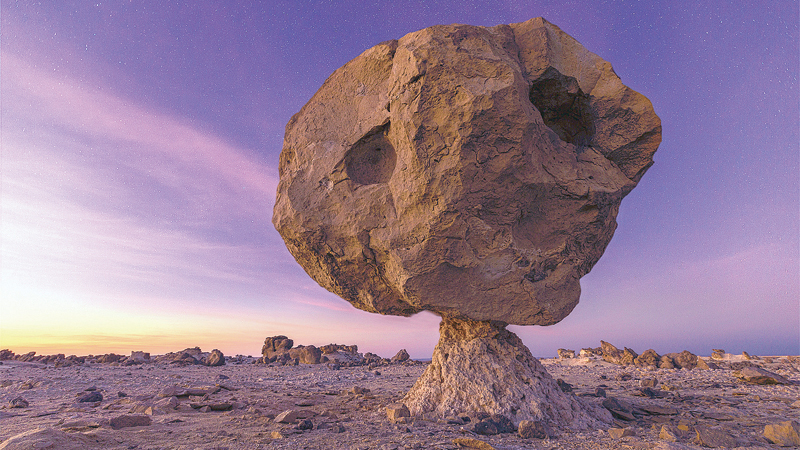

SARNGADHARAN NAMBIAR -
With a wealth of ancient geological features that are rarely found anywhere else, the Sultanate can easily qualify as the finest global geotourism destination
The process started long before we were born. And the process will continue long after we are gone, leaving behind geosites with impressive geological and geomorphological features. If you can tag yourself as a geotourist, congratulations! Conversing with the abiotic elements of the earth requires sensitivity and sensibility of a higher order.
Naturally, geotourism is the next big thing, and means a lot for the Sultanate, which may be called an extended geosite. With a wealth of ancient geological features that are rarely found anywhere else, the Sultanate can easily qualify as the finest global geotourism destination. But it is yet to fully exploit its geotourism potential and derive multiple benefits including healthier local economy, community development and geo-conservation.
Realising this, the Ministry of Tourism has been looking at enhancing the country’s geotourism prospects with innovative strategies. The design and implementation of the mechanical geological guide project can be considered a major milestone in this direction.
As many as 30 geological sites in Muscat Governorate come under the project. The thrust is on developing appealing tourism products and ensuring their sustainability as well as the quality and depth of services to visitors. The whole idea has been designed to achieve optimal use of the country’s rich biodiversity assets.
The ministry’s work on the implementation of the smart guide for geological tracks in Muscat, along with various projects to boost public awareness about ecotourism, is a first step in positioning Oman as world-class geotourism destination.
The geological tracks guide will go a long way in empowering domestic and international tourists to better explore the amazing geological heritage of the Sultanate, especially the unique rock formations and other precious natural elements whose history spans thousands of years.
The multilingual geological guide features a smart e-application that offers a range of information about the multi-dimensional geo-heritage of various sites highlighting their geological, environmental and cultural features. The other salient features of the project are easy-to-use maps and signboards in both Arabic and English.
The Sultanate’s geological sites are unique and diverse, and are made up of wadis, fountains, deserts, mountain ranges, caves, creeks and islands.
The major sites with high geotourism potential in Oman include the renowned Al Hoota caves, Suhur cave, Majlis Al Jinn, trekking paths across the Hajar mountain range, Duqm Stone Park, Wadi Gul, Wadi Auf, Wadi al Sahtan, Wadi Mistal, Wadi Al Khoud, Wadi al Meeh, and the various volcanic and fossil attractions. Visitors can see ancient rocks dating back 120 million years, some belonging to the Cretaceous period.
The recently discovered Khaslat Al Rowais and Niyabat caves too carry great geological value with interesting rock formations that merit research.
Other key geosites in the Sultanate include the 300 million cubic metre-deep Ithabat Teeq bore, which counts among the largest geological sites in the world, and the Al Birak Al Waghlah fountain, along with the porous limestone deposits of Jabal Akhdhar, the rock formations of Jabal Mishatt, and Oman’s oldest crystalline rocks of Mirbat with a history of over 1,300 million years.
Add to this list the islands of Daymaniyat and Ras al Madarka — considered among the most beautiful geological sites in Oman, the Ras Ruwais peninsula, the pink lagoons of Al Kuhl, the seemingly infinite deserts of Sharqiyah and the fabulous white dunes of Al Khaloof.
The famous ancient falaj irrigation channels too feature among the Sultanate’s geological assets. Five of them are listed on the UNESCO World Heritage Site: Falaj Daris, Falaj Khatmein, Falaj Al Jeela, Falaj Al Malki and Falaj Al Muyassar.
Oman Observer is now on the WhatsApp channel. Click here



